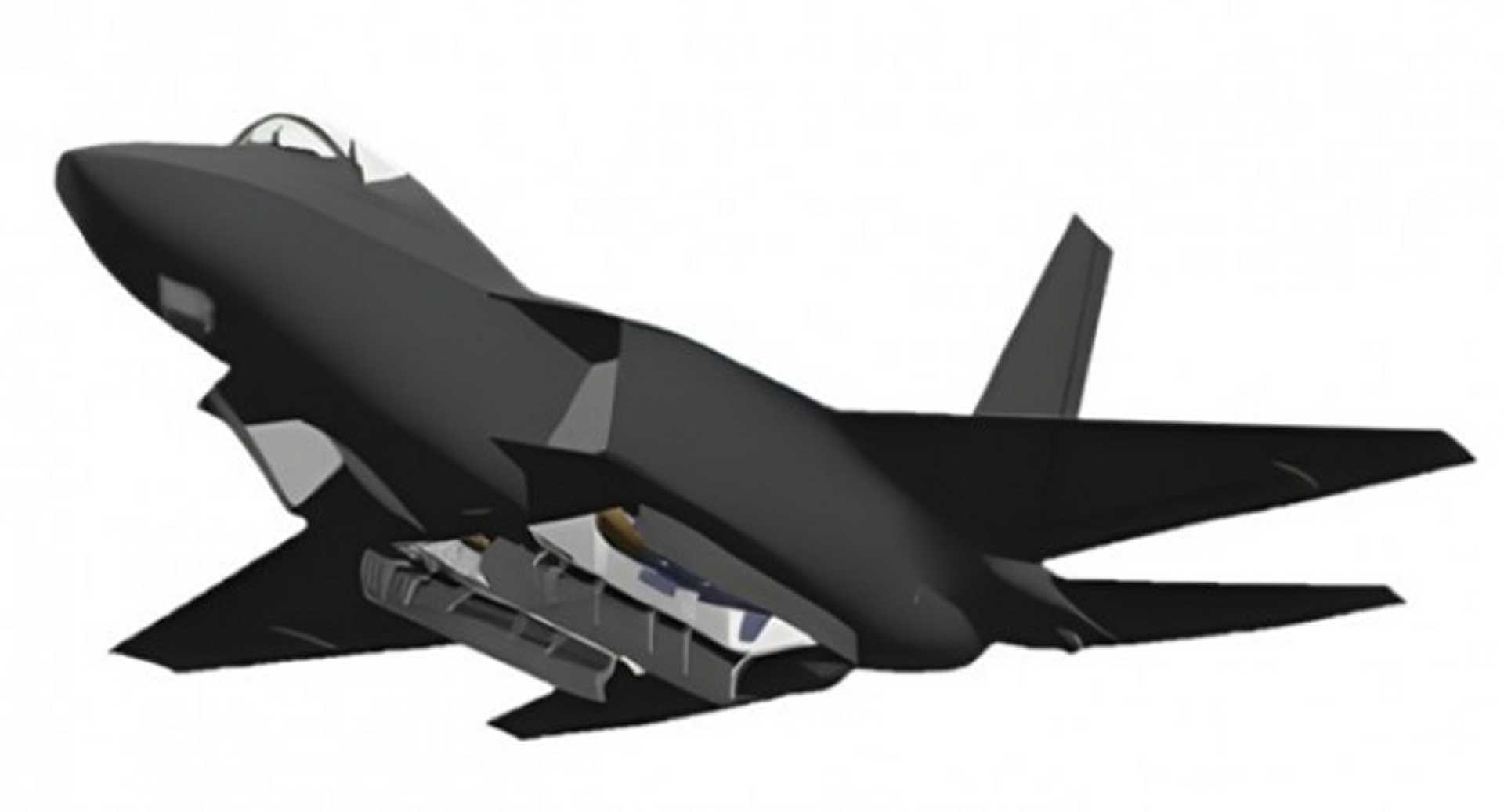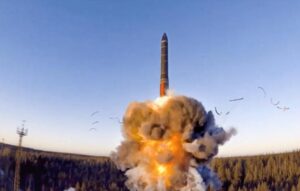韩国研发KF-21EX隐形战机,性能比肩美国F-35,内置武器舱与AI系统

快速阅读: 韩国KF-21EX战斗机采用内部武器舱设计,增强隐身能力,挑战F-35地位。该机具备雷达吸收材料、隐身排气和传感器融合系统,计划2039年达到完全作战能力,成为南朝鲜下一代空战系统核心。
This capability allows the KF-21EX to deliver heavy strike payloads against hardened targets such as bunkers without compromising low observability, a feature currently available only in aircraft like the F-35, Su-57, and J-20. From an aerodynamic perspective, internal storage reduces drag compared to external hardpoints, resulting in better fuel efficiency, higher top speed, and extended mission range. In combat scenarios, internal carriage improves energy retention after maneuvers and enhances flight characteristics by preserving the lift-to-drag ratio, especially during sustained turns or supersonic cruising. More importantly, it avoids increases in radar signature caused by external pylons, making the internal bay a core element in the KF-21’s transformation into a stealth aircraft. Modern stealth jets like the F-22 and F-35 employ this approach to maintain signature control throughout a mission. Although internal bays impose limitations on payload volume and require complex mechanical systems, they are essential for operations in contested airspace protected by advanced integrated air defense systems.
South Korea’s KF‑21EX is poised to challenge the F‑35 in stealth by adopting core design elements of a true stealth fighter. Unlike the current KF‑21, which lacks internal weapon storage, the KF‑21EX adds internal weapons bays to dramatically reduce radar cross‑section, just like the F‑35’s twin internal bays that hide smart bombs and missiles within the aircraft’s smooth contours. While the F‑35 has proven stealth through shaping, RAM coatings, diverterless inlets, and low‑observable nozzles, which combined can make its radar signature smaller than a metal golf ball, the KF‑21EX aims to reach similar levels by adding radar‑absorbing materials, stealth-optimized exhaust, and conformal sensors. Although the F‑35 benefits from decades of real-world stealth operations and software‑defined avionics, the KF‑21EX seeks to bridge that gap by pairing internal carriage with integrated sensor fusion and AI data links in a 5.5‑generation architecture. In sum, the KF‑21EX represents South Korea’s leap toward domain‑level stealth capability, using internal weapons bay design and signature management to approach the radar invisibility standards set by the F‑35.
To support this evolution, the KF-21EX incorporates a complete suite of structural and electronic upgrades. The canopy and radome have been reprofiled to reduce reflective angles, while radar-absorbent materials (RAM) and radar-absorbing structures (RAS) are applied across the fuselage and control surfaces. Stealth-optimized exhaust nozzles are included to suppress infrared signatures, and conformal antennas and embedded sensors are integrated to eliminate external protrusions. Sensor systems comprise an Electro-Optical Targeting System (EOTS), an Electro-Optical Distributed Aperture System (EODAS), and an Active Electronically Scanned Array (AESA) radar with Automatic Target Recognition (ATR) and Non-Cooperative Target Recognition (NCTR). These sensors are fused via high-speed optical and satellite-linked datalinks, processed by an AI-enabled mission computer providing targeting assistance, threat prioritization, and flight-path optimization. KAI has confirmed that Leonardo’s BriteCloud expendable DRFM decoys will also be integrated to enhance survivability in radar-guided threat environments. Collectively, these upgrades place the KF-21EX within the 5.5-generation aircraft category, according to South Korean analysts.
The KF-21EX is intended to serve as the core manned asset in South Korea’s emerging Next Air Combat System (NACS), a distributed operational architecture involving manned-unmanned teaming, drone integration, and multi-domain warfare. KAI envisions the EX operating alongside unmanned platforms such as the LOWUS, coordinating strike missions, conducting escort jamming, and sharing sensor tracks in real time. While the KF-21EX performs escort jamming, accompanying drones will function as stand-in jammers, penetrating contested zones to suppress or deceive enemy air defense radars. MUM-T operations will rely on secure datalink connectivity, AI-managed sensor fusion, and decentralized targeting frameworks. This distributed model will enable the KF-21EX and its drone partners to simultaneously attack dispersed targets, analyze threat vectors, and operate independently of centralized command structures. The overall system will include AI pilots, autonomous onboard management, swarm drone coordination, and potential integration of laser weapons. These capabilities are projected to define the NACS architecture by the 2040s, positioning the KF-21EX as its principal manned component.
The KF-X program began in 2001 with the aim of developing an indigenous fighter to replace the aging F-4 and F-5 fleets of the Republic of Korea Air Force. Following a decade of feasibility studies, propulsion assessments, and airframe design trials, the C103 twin-engine configuration was selected in 2014, and full-scale development commenced in 2015. The first KF-21 prototype flew on July 19, 2022. By mid-2025, six prototypes, including two-seat variants, had completed over 1,300 flight tests, reaching a top speed of Mach 1.8 and surpassing 1,000 accident-free sorties by November 2024. Block I production began in 2024 with an initial order of 20 aircraft, followed by a second order for 20 more in June 2025. Deliveries are scheduled from late 2026 through 2032, targeting a fleet of 120 units. Block II, offering multirole air-to-ground enhancements, is expected to reach operational readiness by 2028. The KF-21EX Block III is projected to mature operationally around 2039. According to KAI’s 2024 roadmap, the EX will also serve as the base for a future sixth-generation fighter, potentially incorporating tailless designs, directed energy weapons, and autonomous AI systems.
The KF-21EX will likely retains the twin-engine layout of its predecessor, powered by two General Electric F414-GE-400K afterburning turbofans. Each engine generates approximately 14,400 pounds of thrust in dry conditions and up to 22,000 pounds with afterburner, supporting a maximum speed of Mach 1.8. The airframe accommodates a maximum takeoff weight of around 25,600 kilograms and a payload capacity approaching 7,700 kilograms. The aircraft measures approximately 16.9 meters in length, has a wingspan of 11.2 meters, and stands 4.7 meters tall. It features fly-by-wire controls, a glass cockpit with wide-area multifunction displays, and a side-stick control system. The aircraft’s operational range and endurance are enhanced by aerodynamic refinements and the internal weapon carriage, which reduces drag. Its clean profile and fuel efficiency enable it to undertake both air superiority and deep-strike missions without external tanks during the initial phase. A refueling probe allows for extended-range missions when stealth requirements are relaxed. Designed with modularity in mind, the KF-21EX is prepared for future integration of advanced systems, including AI-managed mission payloads and directed energy weapons, aligning with the long-term evolution of South Korea’s air combat strategy.
In addition to the KF-21EX, two further variants are under conceptual development: the KF-21EA for electronic attack and the KF-21SA for export. The EA variant, inspired by the U.S. Navy’s EA-18G Growler, is intended for Suppression of Enemy Air Defenses (SEAD) missions using escort jamming and anti-radiation weapons such as the AARGM-ER. It will likely be based on the twin-seat KF-21B, with an electronic warfare officer in the rear seat. Its configuration is expected to include three jamming pods, two high-frequency and one low-frequency, plus two electronic support measure (ESM) pods mounted on the wingtips for threat detection and signal analysis. Structural reinforcements will permit simultaneous deployment of jamming systems, anti-radiation missiles, and air-to-air weaponry. The KF-21SA is being developed for international clients and will likely use the same airframe as the Republic of Korea Air Force variant, with modifications based on customer requirements. Despite visibility surrounding all three variants, officials caution that full-scale development remains at the conceptual stage and that the KF-21EX and EA will require at least another decade to achieve operational capability. Analysts stress that early serial production of the KF-21EX is crucial for ensuring long-term export competitiveness.
(以上内容均由Ai生成)







